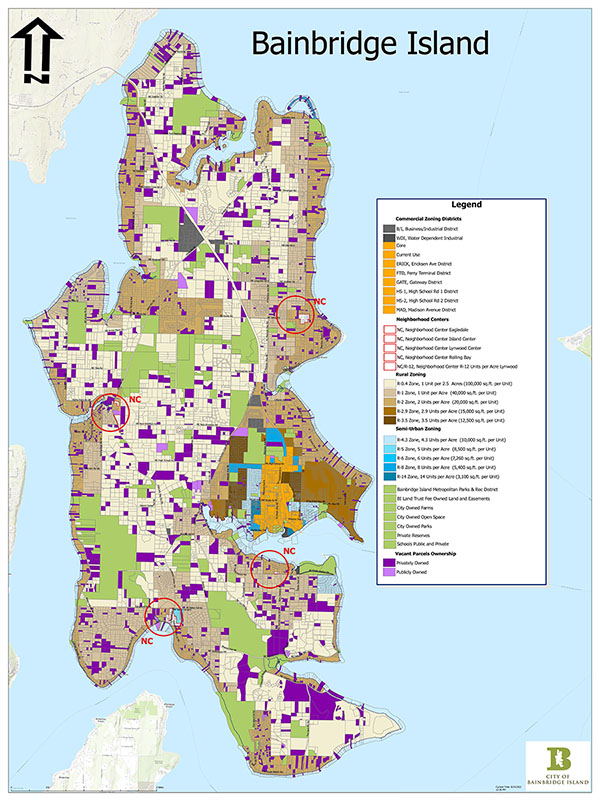Key terms
To advocate for the creation of affordable homes and the policies that support it, you will need to speak the language of housing policy.
The following tools and policies encourage the creation of affordable housing and are key strategies under consideration by the city of Bainbridge Island with frequent appearances on City Council and Planning Commission agendas. Each program can be shaped to suit conditions on Bainbridge.
Inclusionary zoning
Inclusionary zoning encourages or requires developers to include below-market units as part of market-rate developments. These policies can lead to affordable housing that is integrated in neighborhoods throughout the community. Inclusionary zoning programs often incentivize voluntary participation or compensate developers for required participation.
Density bonuses
Density bonuses are one way to incentivize inclusionary zoning. They allow a developer to build more units than allowed by the zoning code in exchange for building affordable homes. This can be achieved by raising height allowance, increasing the number of units, or lowering parking requirements.
Floor area ratio (FAR)
FAR is the ratio of a building’s total floor area to the size of the lot. Cities use FAR to regulate building size. For example, a maximum FAR of 1.0 on a 10,000 sf lot means that the site can support a building with two 5,000 sf floors, a building with four 2,500 sf floors, or any other building with floors that add up to 10,000 sf and comply with city limits on lot coverage and height. Unlike limits placed on units per acre, FAR does not control the number of dwelling units within a given building, creating an opportunity to build more but smaller homes.
Middle housing
Not to be confused with middle-income housing, this term has nothing to do with income and instead refers to the size and type of home. Middle housing falls between detached single-family homes and mid-rise apartment buildings. It includes duplexes (side by side or stacked), larger multifamilies, townhomes, and cottage courts and offers more potential for affordability than single-family housing.
Multifamily tax exemption
The multifamily tax exemption is used to encourage the development of affordable multifamily housing by granting a partial property tax exemption (for 8, 12, or 20 years in Washington). The exemption applies only to the portion of the development that is affordable.
Transfer of development rights
A transfer of development rights program allows developers to purchase development rights from “sending areas,” such as farms or critical habitat, for use in “receiving areas,” such as city centers or other areas designated for growth. The developer is allowed to build with greater density, and the landowner is compensated for the loss of development potential. A conservation easement is placed on the sending area, ensuring that the land is permanently protected.
Housing Design Demonstration Project
The City of Bainbridge Island conceived the Housing Design Demonstration Project (HDDP) to increase the supply and choice of housing and to create housing that serves low-income households and uses innovative green building practices. Qualifying projects are granted incentives, such as density bonuses and reduced parking and setback requirements, in exchange for building affordably and sustainably.
Visit our Advocacy Alert archive.
Zoning map of Bainbridge
View the island through the lens of housing. This map, commissioned from the city, shows the opportunities and constraints for affordable housing and the balance of natural and developed lands.
Click to enlarge
Recommended resources:
Affordable Housing Task Force Report (City of Bainbridge Island, 2018)
